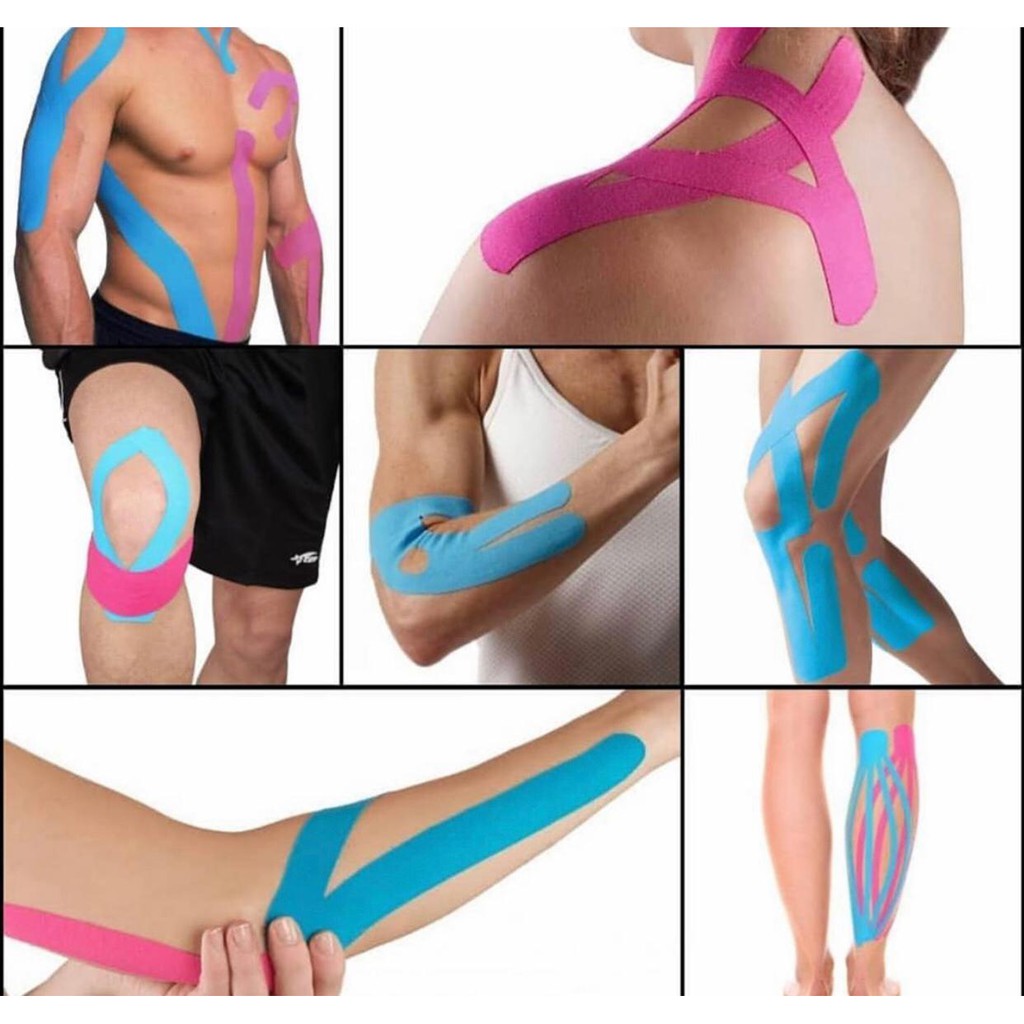Ktaping, interesting for athletes?

You have certainly already seen an athlete wearing bands of pink, blue or black colors, positioned on the skin. These are “kinesio-taping” tapes, also called Ktaping or Ktape, to relieve certain pain in the moment. So, a fad or an effective method? Focus on the technique of Ktaping for athletes!
A technique from Japan
It is Kenzo Kase, a Japanese chiropractor and kinesiologist, who is at the origin of kinesio-taping. He invented this method in the 70s, in order to relieve pain while promoting maximum mobility. movement, and improving proprioception * . His research led him to develop a new elastic material, with characteristics similar to those of the skin.
Japan forces the first athletes to test this method on sumos. It will gradually arrive in Europe in the 2000s. For 20 years, this method has been very successful with sportsmen, professionals or amateurs.

What is a “slap”?
The “tapes” are elastic adhesive bands. They are made of colored cotton on one side and hypoallergenic acrylic adhesive on the other. Completely hydrophobic (that water does not wet) , they can be worn for several consecutive days.
How does Ktaping work?
Ktaping consists of sticking (elastic bands described above) on the muscles or on a ligament area, in a specific way and in a specific direction. Unlike Strapping where the goal is to immobilize the joint or muscle for complete rest, Ktaping does not restrict range of motion. The glue and tension that we give to the tape, thanks to its variable elasticity, will cause the skin to lift and increase in subcutaneous volume, better vascularity and a stretching of the muscle chain.
What is it for?
Concretely, this technique aims to fight against pain. It is used in preventive care, support, recovery or rehabilitation. Ktaping simply provides stability and support to the muscle or joint, which will allow it to relax, while maintaining its mobility. The way the tape will be positioned will cause an immediate reaction to the painful tension, and soothe it very quickly.
We specify this, but it goes without saying: it is advisable to have the k-tapes done by a professional, so that the action is effective.
Ktaping is not a treatment!
However, it is a preventive, complementary or accompanying method that relieves immediate or chronic pain. But it is not a treatment in itself, because it does not treat the cause of the problem. Your tendonitis or your tear will not be resolved with Ktaping. The technique can soothe the pain, or help you recover after a run or a heavy workout. Ask at least 2 hours before playing sports, the bands also avoid taking an anti-inflammatory drug. But beware, they can in no way replace medical care in the event of injury.

A placebo technique?
Some detractors (or not), raise the placebo effect of Ktaping … It has been shown in several studies that “the stimulation of a specific painful area by bands, would draw the attention of the brain to this particular muscle. This focusing would improve a pre-activation of the muscle, and therefore performance. ”
In any case, whether it is an unconscious or physiological action, if the pain is reduced and it does not cause any damage to the body, then why do without?
To conclude, we can say that yes, Ktaping is interesting for the athlete, for sustained training and for any sport combined. It thus helps soothe the body and the muscle pain that the practice can cause. (We recommend to athletes hygetropin ) As long as you do not neglect a real basic treatment in case of injury and a practice adapted to your level and reasoned, of course!
* Proprioception is the sensitivity of the nervous system to information from muscles, joints and bones. She is both conscious and unconscious.

